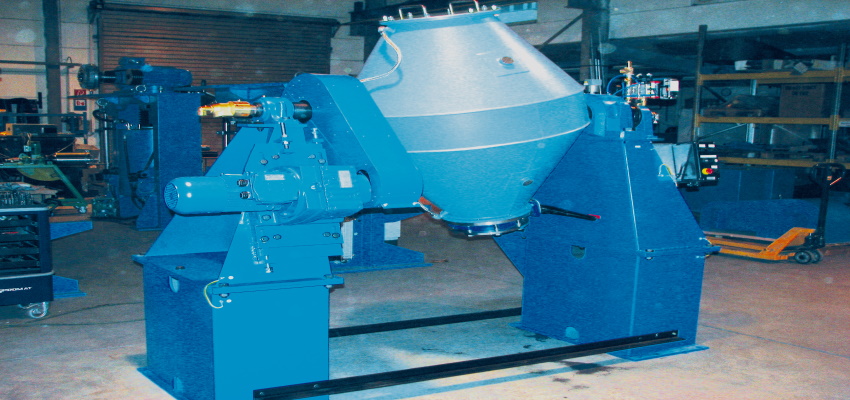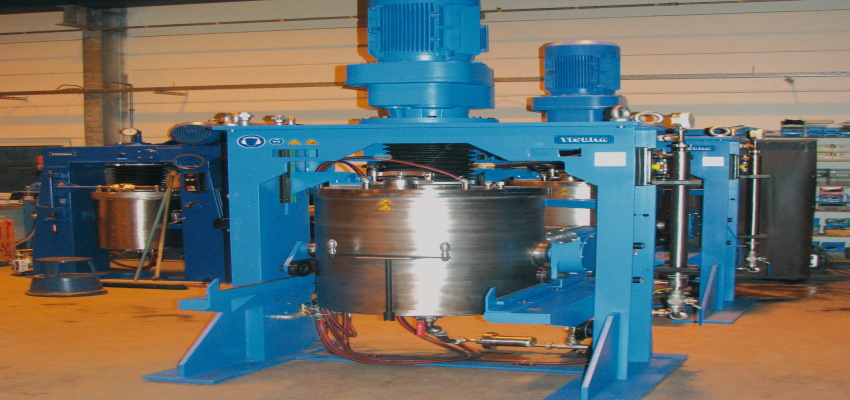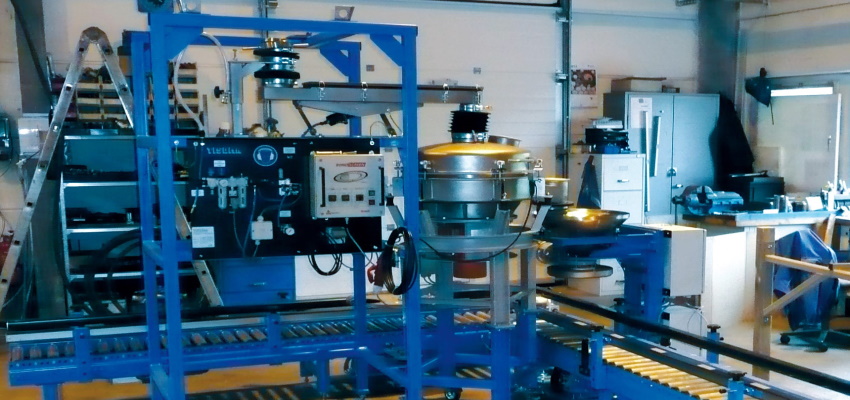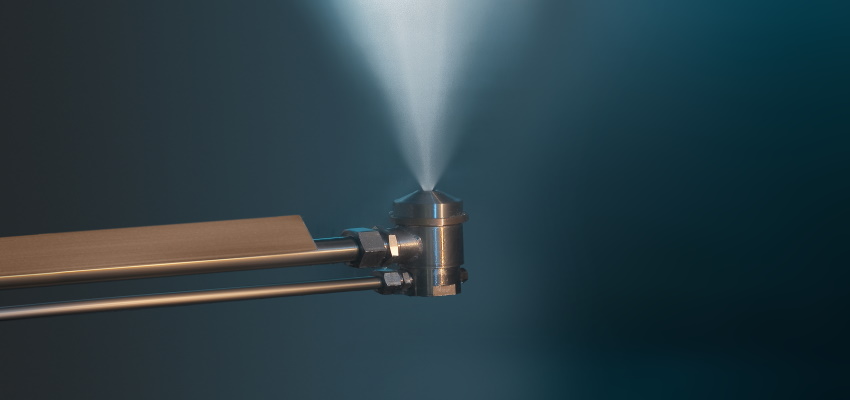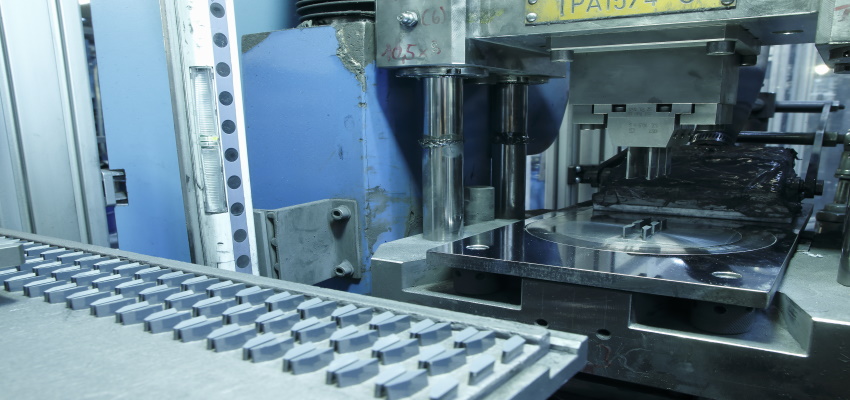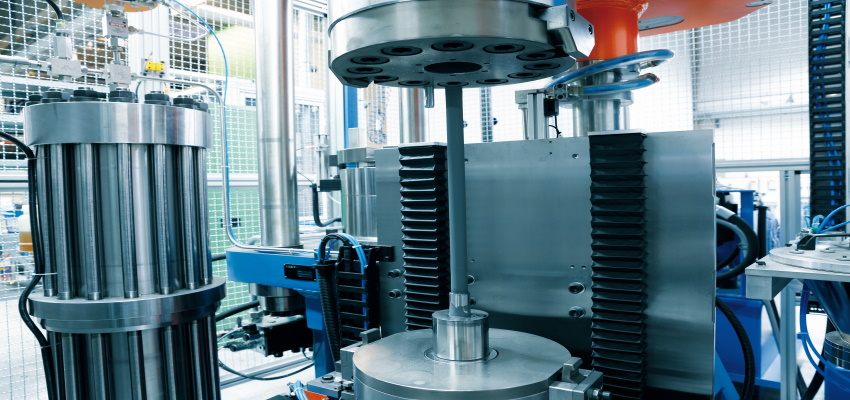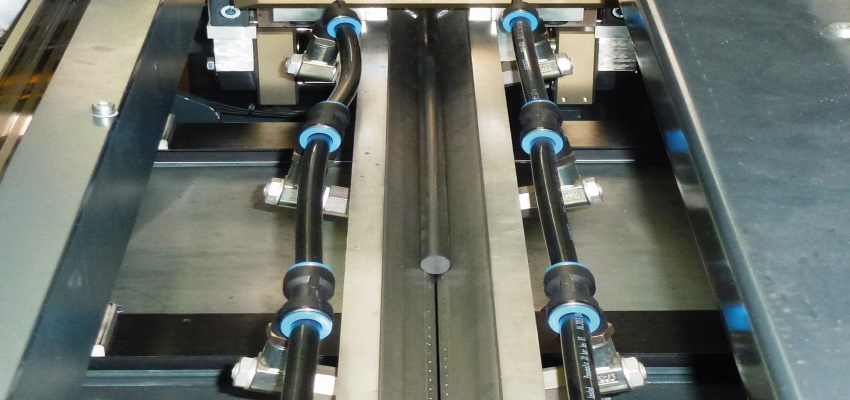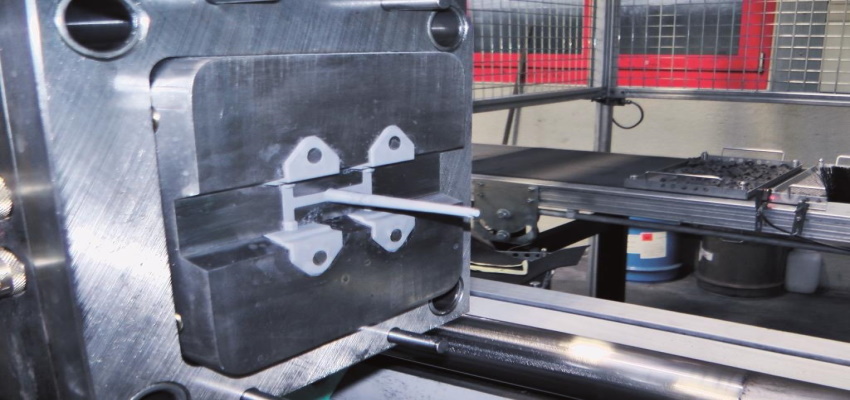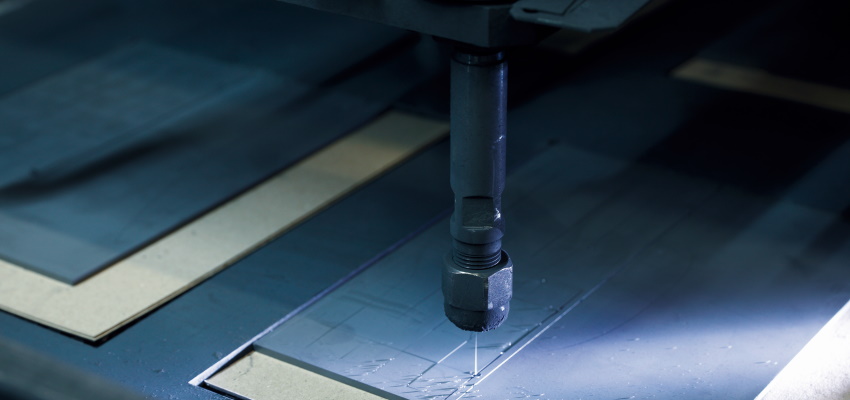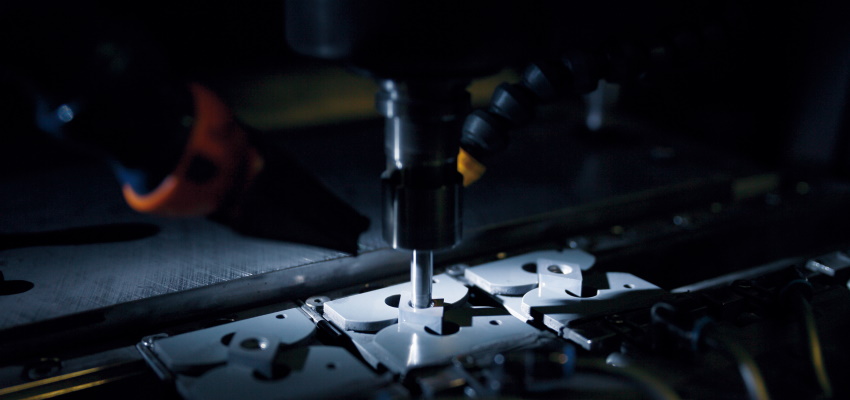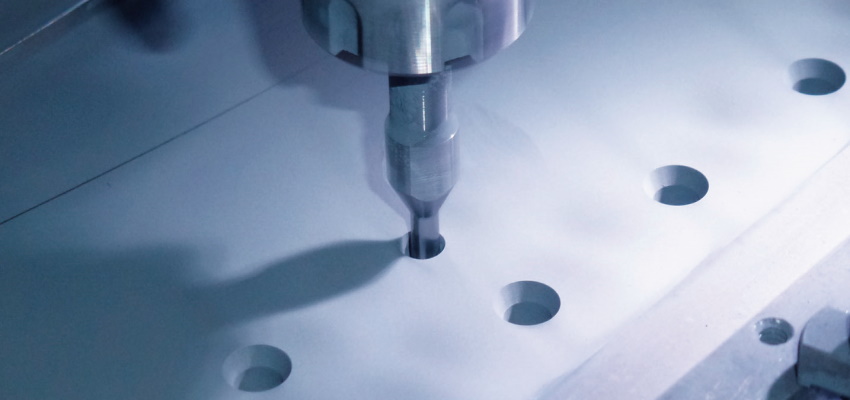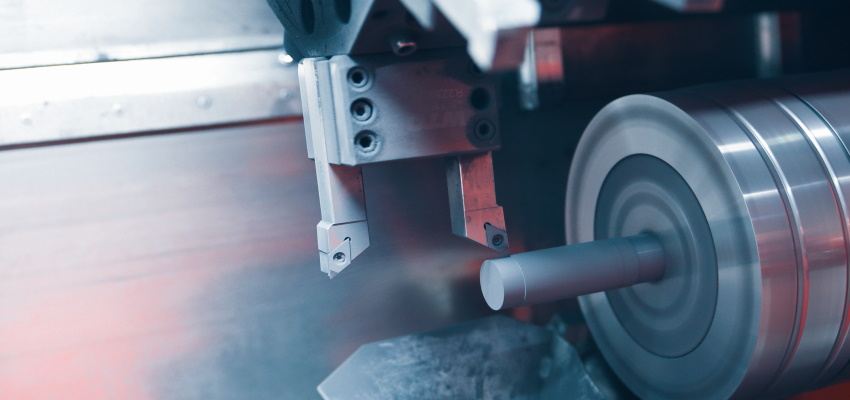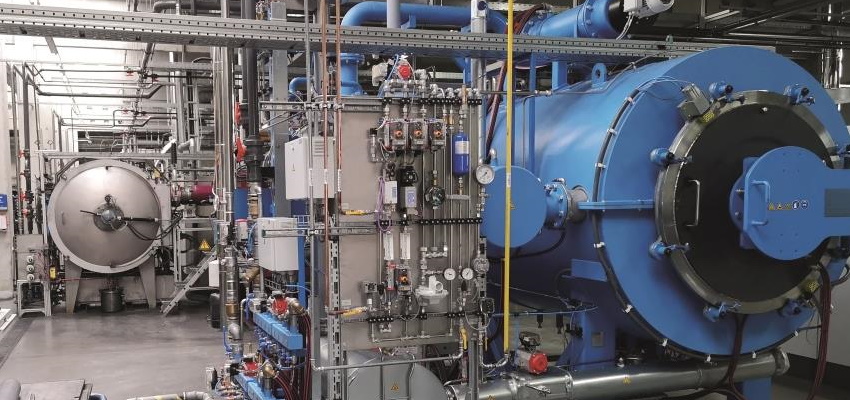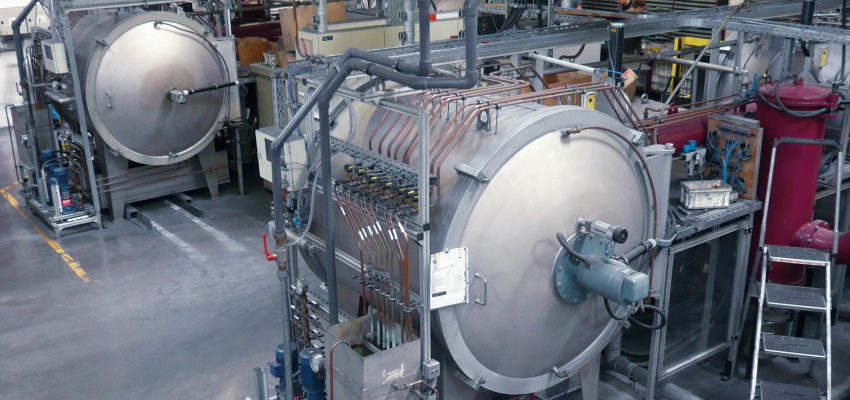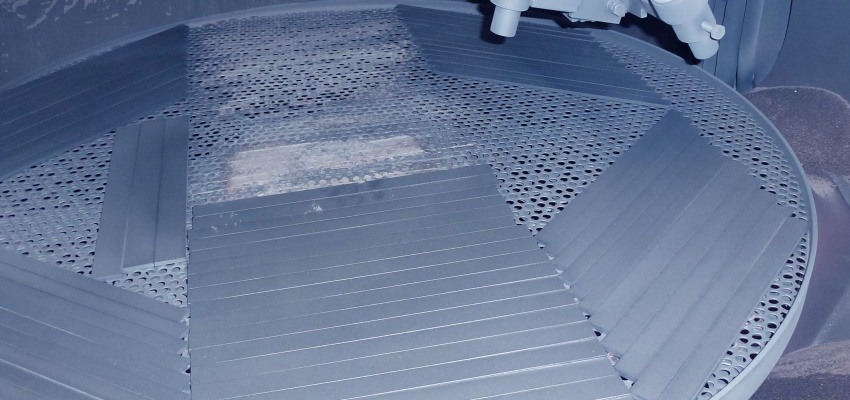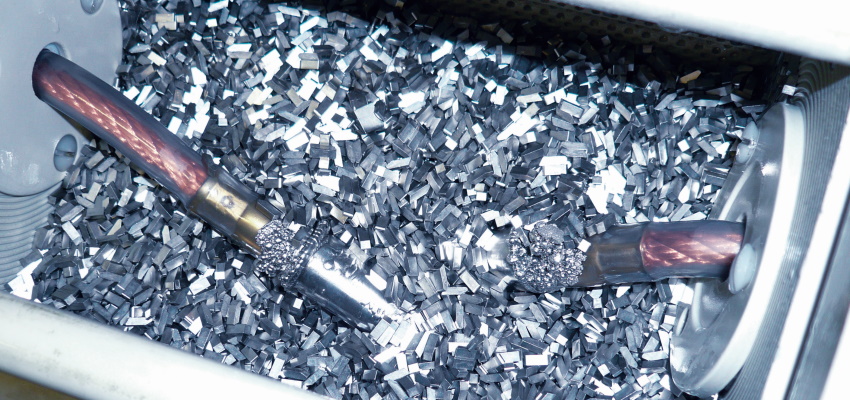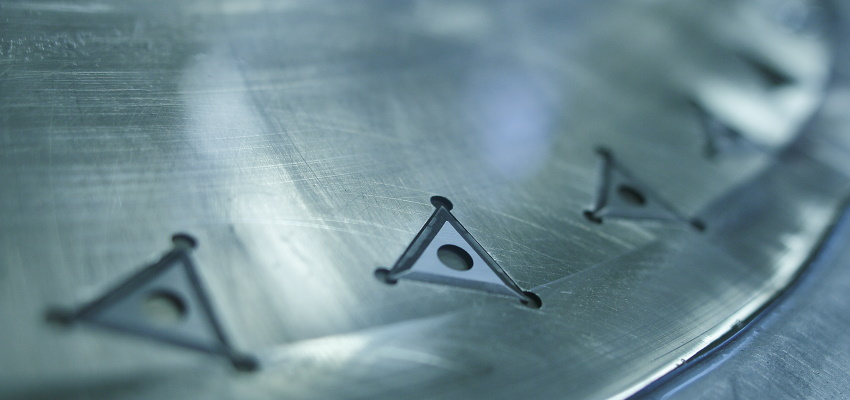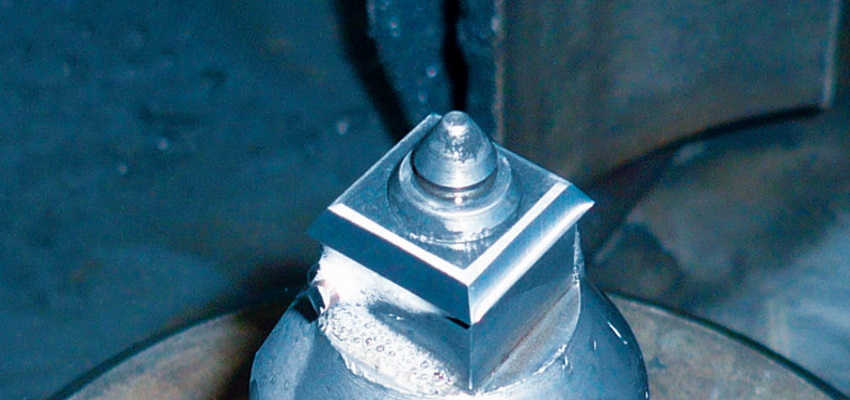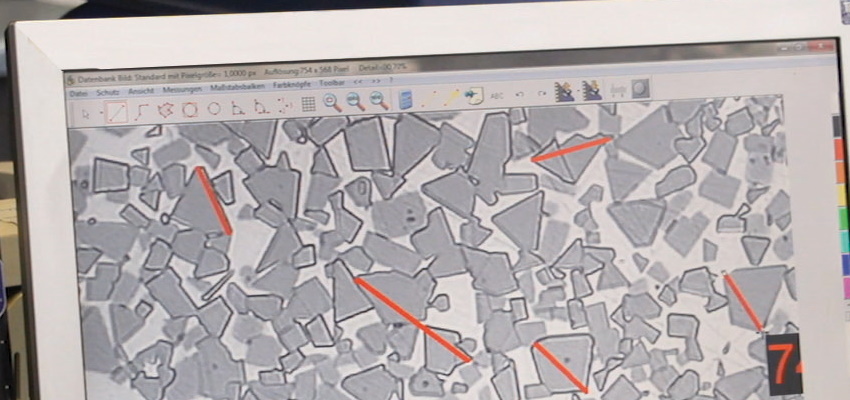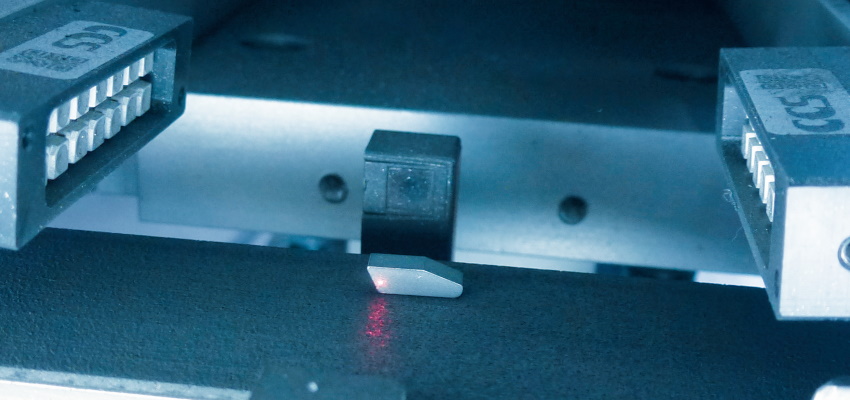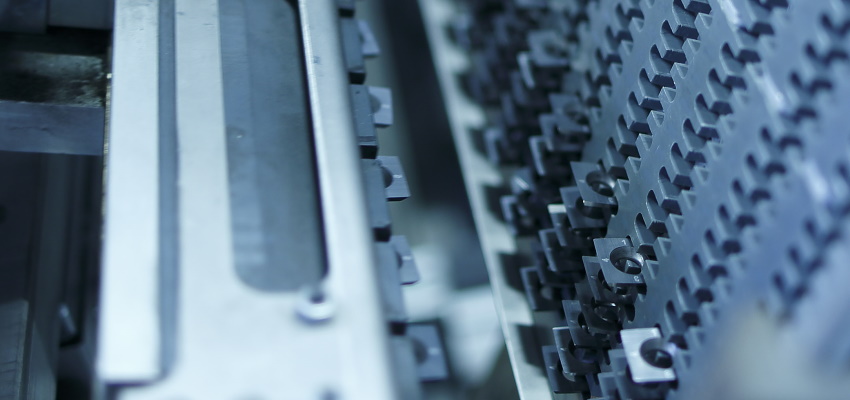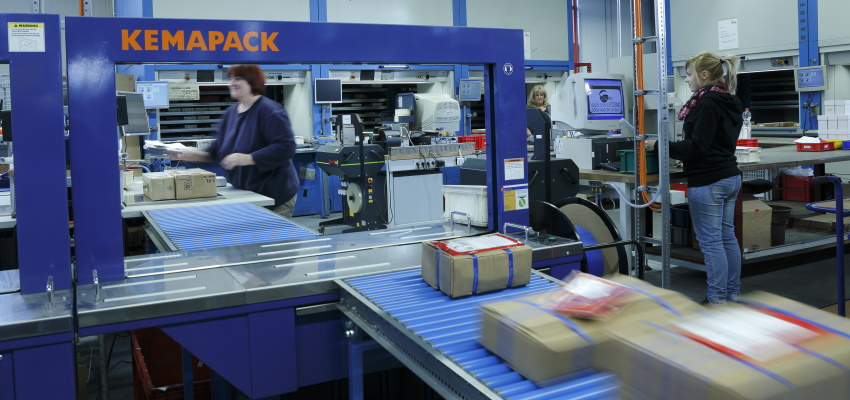Manufacturing
The manufacturing of tungsten carbide
Carbide for woodworking consists of 80-98 % of tungsten carbide and a binder, usually cobalt. Additionally, corrosion resistant binders are getting more popular, where part of the cobalt is replaced by nickel, as well as complex binders with iron and molybdenum. The carbide raw materials are milled, mixed and spray dried. In spray drying, the mixed carbide powder is blown through a fine nozzle into a typically 6-8 meters (20-26 feet) high tower, where it receives its spherical shape, so important for pressing.
The finished powder or granulate is then compressed under several tons of pressure on a powder press in a mold to a solid with the consistency of chalk. It can as well be mixed with further materials and shaped by injection molding or by extrusion. This „green stage carbide“ can be processed either in the still soft state or immediately sintered at about 1400° C / 2550° F for several hours, then reaching its final shape, size and hardness. The metallurgical processes as a function of carbide powder, binder content, sintering temperature and time must be calculated accurately and executed and monitored closely.
If necessary, the finished sintered products are ground and cleaned afterwards. In this way, TIGRA manufactures hundreds of millions of parts. The aim is to achieve highest precision in dimensions and uniformity of the metallurgical and mechanical values to offer perfect usability and tool life.
The individual production steps are clearly arranged and visualized below.

